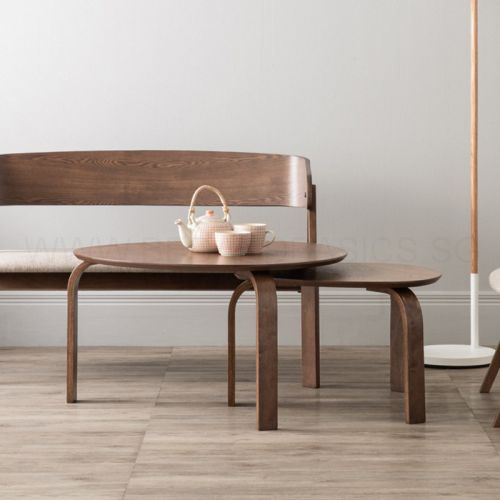
Wood has held a cherished and timeless role in furniture making, providing a wide range of options for crafting functional and aesthetically pleasing pieces. In this blog, we will explore the diverse world of wood used in furniture, like oak wood, hevea wood, Malaysian oak wood, particle wood, laminated wood board, engineered wood, wood veneer, and MDF wood.
Oak Wood
Oak wood remains a classic and beloved choice for crafting furniture, with two primary varieties:
- Red Oak: Boasting a warm reddish-brown hue and prominent grain patterns, it’s known for its durability, making it a favorite for crafting sturdy and long-lasting pieces. Red oak readily accepts stains and finishes, offering a wide range of design possibilities.
- White Oak: Featuring a lighter color and finer grain pattern compared to red oak, white oak is highly resistant to moisture, making it an excellent choice for outdoor furniture or pieces exposed to humidity.
Hevea Wood
Sourced from the rubber tree (Hevea brasiliensis), hevea wood, also known as rubberwood or plantation hardwood, represents a sustainable and eco-friendly choice for furniture production. It boasts a light, pale color and fine grain patterns, making it versatile and easy to stain or finish. Its popularity derives from its sustainability and durability.
Malaysian Oak Wood
Malaysian oak wood, sharing its origins with hevea wood, comes from the same rubber tree species. It is prized for its sustainability and durability. While its grain patterns and color resemble traditional oak, it is generally more affordable. Malaysian oak wood finds frequent use in constructing dining tables, chairs, and bedroom furniture.
Particle Wood (Particleboard)
Particle wood, commonly known as particleboard, serves as a versatile and cost-effective wood material often used in furniture manufacturing. It results from binding wood particles, sawdust, or wood chips together with adhesives and compressing them into sheets. While particle wood offers affordability, it may not match the durability of solid wood and remains sensitive to moisture. It frequently serves as a core material for laminated wood boards and veneers.
Wood Veneer
Wood veneer comprises a thin layer of real wood, sliced or peeled from a hardwood log and adhered to a substrate, often particleboard or MDF. Veneers provide the beauty of solid wood with increased stability, creating decorative surfaces on furniture pieces to mimic solid wood without the expense.
Laminated Wood Board
Laminated wood boards combine a core material, typically particleboard or MDF, with a decorative laminate layer. The laminate, a thin sheet of synthetic material that mimics wood grain patterns or other decorative designs, results in cost-effective boards known for their stain and scratch resistance. They offer a wide range of design possibilities and commonly find use in kitchen cabinets, countertops, and various furniture types.
Engineered Wood
Engineered wood encompasses a diverse category of wood products created by bonding or gluing together layers or strands of wood fibers, particles, or veneers. Plywood and oriented strand board (OSB) are prime examples of engineered wood. These materials offer enhanced stability and strength compared to solid wood, making them suitable for structural applications in both furniture and construction projects.
MDF Wood (Medium-Density Fiberboard)
Medium-Density Fiberboard (MDF), another type of engineered wood, results from crafting wood fibers, wax, and resin into dense sheets through compression and heating. Renowned for its smooth and uniform surface, MDF serves as an excellent choice for furniture requiring a flawless finish. It commonly finds use in cabinet construction, shelving, and paneling.
In conclusion, wood plays a diverse role in furniture making, with each type offering unique attributes. Understanding these options empowers you to make informed choices when selecting furniture that aligns with your style, budget, and sustainability values.
Shop wooden furniture at BEDANDBASICS today!
Read more on How to Keep Solid Wood Furniture Looking Brand New








